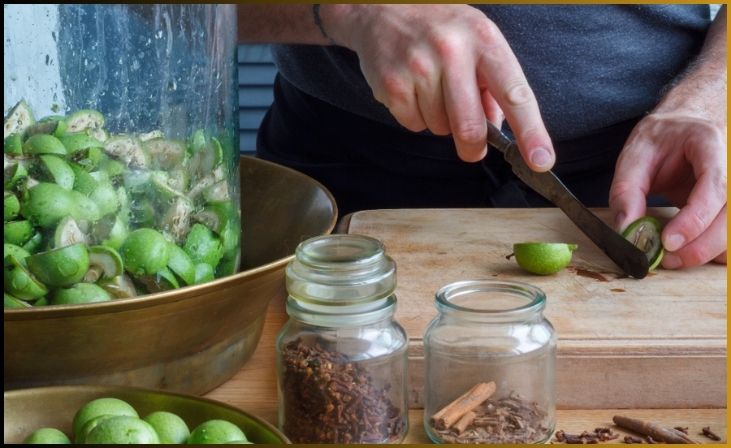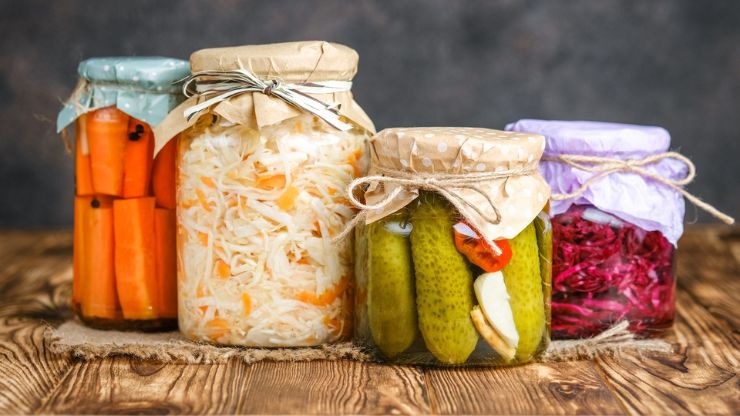Fermenting vegetables is a delightful and nutritious way to preserve fresh produce and create probiotic-rich foods. However, fermenting in hot weather presents unique challenges due to the increased risk of spoilage and rapid fermentation. As the mercury rises, the chances of mold growth and undesirable flavors become more significant. Fear not! In this article, we’ll provide you with essential tips to successfully ferment in hot weather. With the right techniques and precautions, you can continue your fermentation journey and savor the tangy goodness even during the hottest months.
Table of Contents
ToggleWhy Fermenting in Hot Weather Requires Special Attention
Fermentation is a delicate process that relies on the growth of beneficial bacteria and the inhibition of harmful microorganisms. In hot weather, higher temperatures can accelerate bacterial activity, leading to rapid fermentation. This may result in over-fermented and overly sour vegetables. Additionally, the increased humidity can create an environment conducive to mold growth, which can spoil the batch.
Tips for Successful Fermenting in Hot Weather
With these practical tips, you can ensure the successful fermentation of your favorite vegetables and enjoy delicious and gut-friendly treats all year round.
1. Monitor Room Temperature
In the cosmic symphony of fermentation, the conductor’s wand is the ambient room temperature, dictating the tempo of microbial orchestration. Aim for an idyllic harmony between 68°F to 75°F (20°C to 24°C), a temperature spectrum that serenades most vegetables into their transformative dance. Should the room’s mercury soar beyond this melodic range, orchestrate a relocation – a gentle migration to a cooler sanctuary like a basement or a temperature-controlled pantry. Here, amidst the moderated climate, the microbial musicians continue their celestial composition, crafting a sonata of flavors within the jars. This vigilance ensures the dancers waltz in the perfect rhythm, creating a symphony of taste that resonates with the cosmic cadence of fermentation.
2. Use Smaller Jars

When the summer sun cranks up the heat, it’s time to downsize your fermenting stage. Opt for petite fermentation vessels over grandiose ones to navigate the sweltering dance floor. Large batches, akin to fervent dance partners, generate excessive warmth during their fermentation tango, risking an overheated affair. By segmenting the vegetable troupe into more intimate jars, you gain control over the temperature symphony. This orchestration ensures an even and controlled fermentation, where each jar pirouettes in harmony, producing a dazzling display of flavors. So, as the sun scorches, let the smaller jars become the maestros of a refreshing, well-choreographed fermentation performance.
3. Reduce Fermentation Time
When the mercury rises, the fermentation dance quickens its pace. In the heat’s fervent embrace, contemplate a reduction in the fermentation duration, allowing the vegetables to hit their flavor crescendo sooner. Frequent tastings become your choreography notes, as the veggies may attain their prime texture and taste in a shorter interlude. Navigate this accelerated rhythm with vigilant checks, ensuring your vegetable symphony doesn’t miss a beat. The faster tempo of hot-weather fermentation unveils an expedited culinary performance, bringing the curtain down on your flavorful creation sooner than anticipated. So, in the summer heat, let the accelerated fermentation be your culinary maestro, orchestrating a vibrant and swift masterpiece.
4. Adjust Salt Levels
In the theater of fermentation, salt assumes a pivotal role, directing the pace of the microbial performance. As the temperature gauge climbs in the summer spotlight, consider tweaking the salt script. A slight reduction in salt quantity becomes the conductor’s cue, orchestrating a more measured tempo to prevent the vegetables from reaching a crescendo of tanginess too soon. This delicate adjustment in the salt symphony allows for a controlled fermentation dance, ensuring the vegetables achieve the perfect balance of flavors even in the heat’s fervor. So, in the warm embrace of summer, let salt be your maestro, fine-tuning the fermentation score for a harmonious and well-paced production.
Want to Know? The Tips to Get Your Child Hooked on Probiotic-Rich Foods
5. Use Fermentation Weights
In the subaquatic realm of fermentation, where vegetables transform into flavorful wonders, the use of fermentation weights becomes the guardian of submersion. These weights, akin to culinary anchors, perform the vital task of ensuring vegetables stay fully immersed in their liquid ambience. This underwater ballet minimizes the risk of air exposure, a choreography meticulously crafted to thwart the lurking specter of mold growth. As stewards of this submerged symphony, it’s imperative to bestow upon the weights the virtue of cleanliness and sanctity before their descent into the fermenting vessel. By maintaining this hygienic ritual, the weights become sentinels, safeguarding the alchemy below the surface, where vegetables surrender to the transformative embrace of fermentation.
Don't just scroll, subscribe!
BuzzTrail's unique web-stories are the cure for boredom you've been waiting for.
6. Burp the Jars
In the lively dance of fermentation, where microscopic performers exhale gases in a spirited display, vigilance is key. As the microbial orchestra plays its symphony, gases can accumulate within the jars, creating a crescendo that may strain the container’s integrity. To harmonize with this rhythm, the mindful fermenter adopts the ritual of “burping.” This delicate act involves gently cracking open the jars, allowing the exuberant gases to escape without compromising the sanctity of the ferment. However, this ballet must be executed with precision, avoiding contamination that could disrupt the microbial choreography.
Thus, in the delicate art of fermentation, where pressure and patience intertwine, the practice of burping emerges as a safeguard, ensuring a symphony of flavors unfolds without a cacophony of jar breakage.
7. Keep Jars Out of Direct Sunlight
In the dance of fermentation, the jars are the stage, and light is the unwelcome spectator. Direct sunlight, akin to an uninvited spotlight, can disturb the delicate performance within the jars. Its warmth, though comforting elsewhere, becomes an unwanted guest, elevating the temperature within and disrupting the harmonious rhythm of fermentation. This intrusion not only hampers the microbial actors but also fosters the growth of unsavory characters, upsetting the balance of flavors.
To preserve the sanctity of this microbial ballet, fermenters must orchestrate their settings, ensuring the jars are shielded from the intrusive gaze of sunlight and the unwarranted warmth it brings, allowing the microbial performers to thrive in their shaded symphony.
8. Use a Cooling Pad
In the alchemy of fermentation, temperature is a key ingredient, and too much heat can turn the potion awry. For those practicing the sacred art of fermentation in warm climates, the wise may deploy a cooling pad beneath their jars, a magical shield against the relentless assault of excessive heat. These enchanted pads act as guardians, tirelessly maintaining equilibrium, ensuring the elixir within the jars experiences the gentle caress of controlled warmth rather than the scorching blaze of overheating. With this thoughtful intervention, the microbial orchestra can perform in perfect harmony, and the fermenter can bask in the satisfaction of a potion well-brewed.
9. Hygiene and Cleanliness
In the sacred realm of fermentation, cleanliness is the guardian of purity, and meticulous hygiene practices are the incantations that ward off the specter of harmful bacteria. Before embarking on the alchemical journey of fermentation, the wise practitioner must summon the cleansing forces to purify every vessel, utensil, and weight that will come into contact with the sacred elixir. With a diligent hand and a discerning eye, each element of the fermentation ritual must be scrubbed and sanitized, creating a sanctified space for the mystical transformation to unfold. This commitment to cleanliness is the sacred pact that ensures the fermented concoction will be a beacon of health and nourishment, free from the shadows of contamination.
10. Trust Your Senses
As the sun beats down in the heat of summer, the dance of fermentation quickens its pace. In this fervent atmosphere, the alchemical transformation within the jars becomes a lively symphony of flavors. As the conductor of this culinary orchestra, trust your senses to guide the rhythm. Frequent tastings become your baton, allowing you to discern the evolving melody of tanginess. When the crescendo of flavor reaches its zenith, orchestrate the move to cold storage, a serene sanctuary that beckons the fermentation to a slower, more contemplative cadence. In this dance between heat and coolness, you wield the power to shape the final opus of your fermented creation, ensuring a harmonious balance for the palate to savor.
Conclusion (Fermenting in Hot Weather)
Fermenting in hot weather requires a bit of extra attention and care, but it’s entirely possible to enjoy your favorite probiotic-rich treats all year round. By closely monitoring temperatures, using smaller jars, adjusting salt levels, and maintaining good hygiene, you can ensure successful fermentation even in the warmest months. Remember to taste the vegetables regularly and trust your senses to achieve the perfect tanginess.
So, don’t let the heat deter you from your fermentation journey. Embrace these tips and relish the delicious, gut-friendly goodness of your homemade fermented vegetables, no matter the weather.
FAQs
Can I ferment vegetables in the sun during hot weather?
Can I ferment vegetables in the sun during hot weather?
It’s not recommended to expose fermentation jars to direct sunlight. Sunlight can raise the internal temperature, disrupting the fermentation process and encouraging undesirable bacterial growth.
How can I prevent jar breakage during fermentation in hot weather?
How can I prevent jar breakage during fermentation in hot weather?
“Burping” the jars by opening them slightly can release excess gas, reducing the risk of pressure buildup and breakage. Perform this process carefully to avoid contamination.
Should I adjust the salt quantity in hot-weather fermentation?
Should I adjust the salt quantity in hot-weather fermentation?
Yes, consider slightly reducing the amount of salt to slow down the fermentation process and prevent vegetables from becoming overly tangy in warmer temperatures.
What is the role of cooling pads in hot-weather fermentation?
What is the role of cooling pads in hot-weather fermentation?
Cooling pads help regulate the temperature under fermentation jars, preventing overheating and ensuring a controlled environment for the fermentation process.

